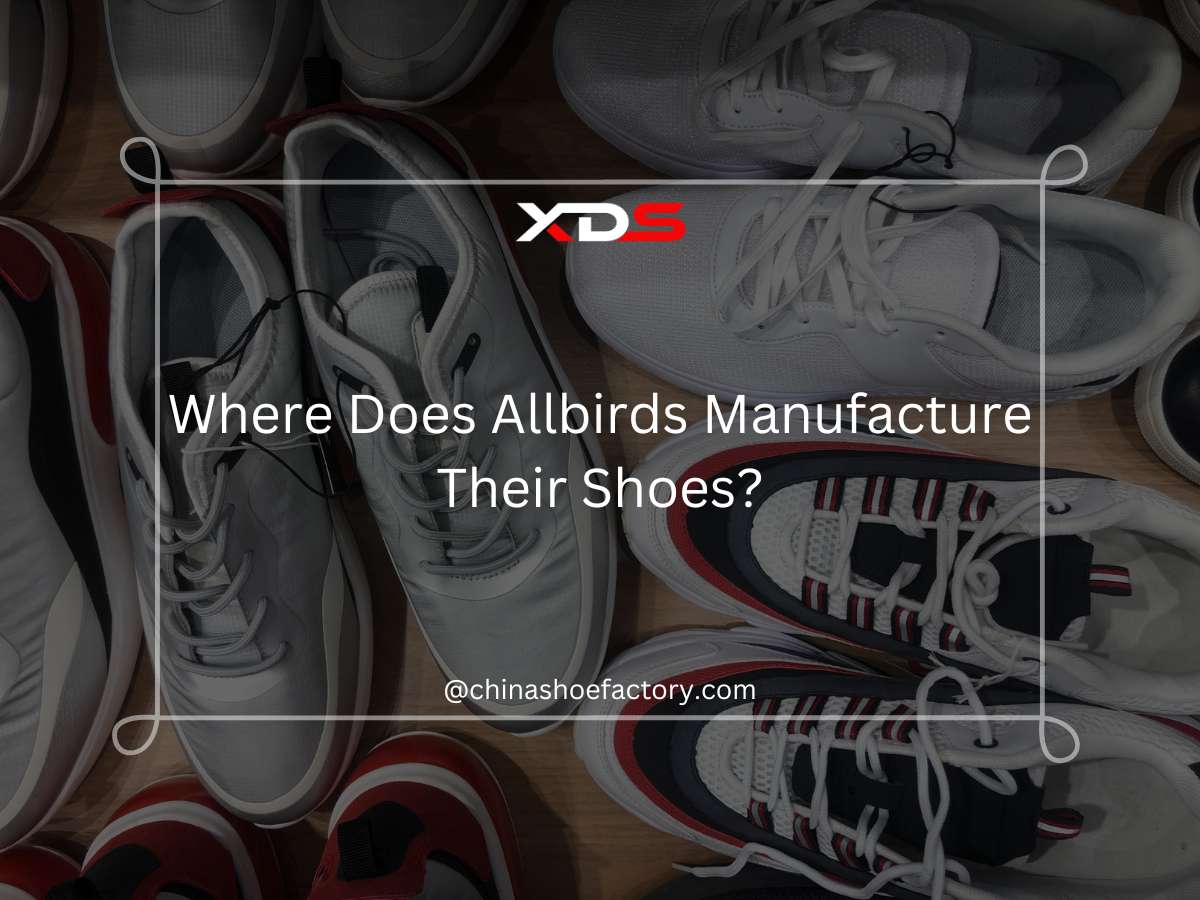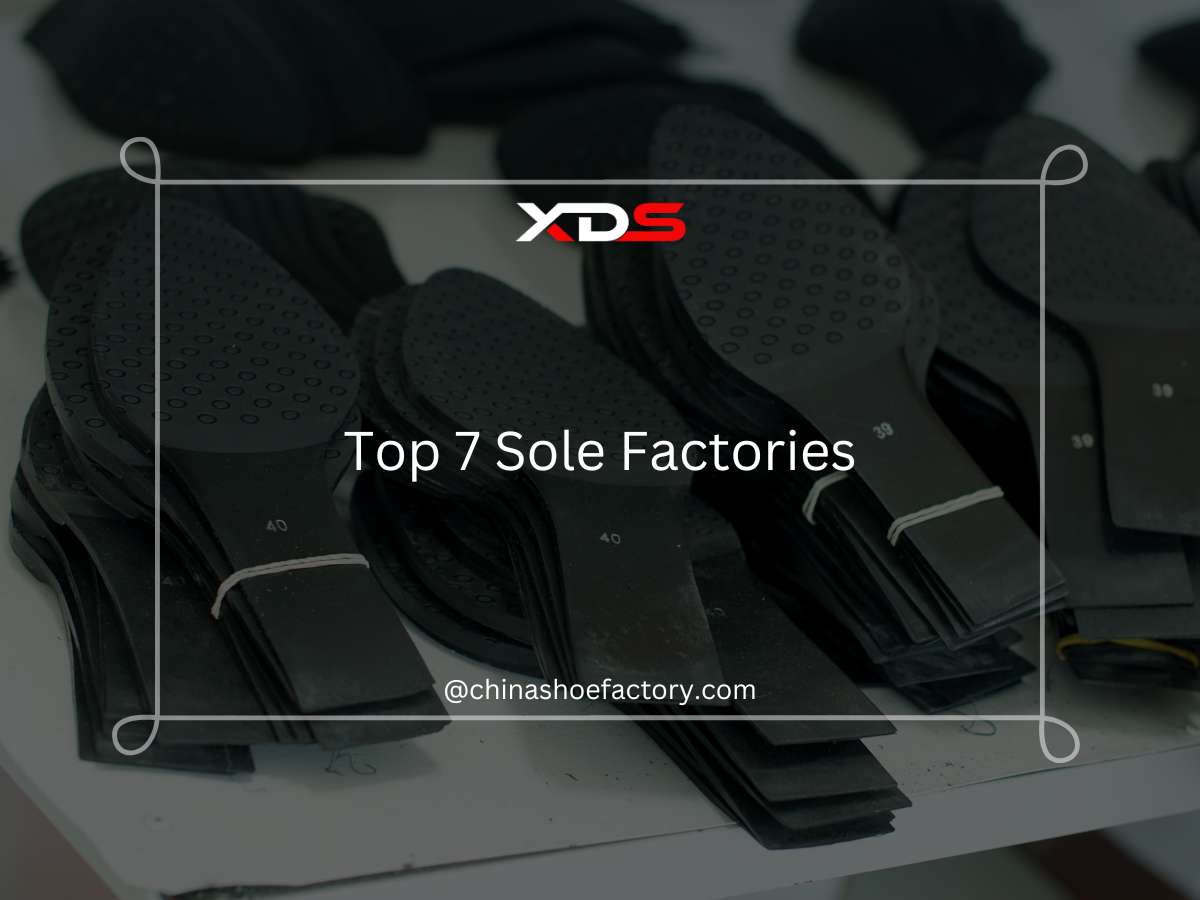What are the Parts of a Boot Sole?

Author: Andy Hong | Founder at XDS
Hi, I'm Andy Hong, here to share my expertise in footwear manufacturing with you.
What are the Parts of a Boot Sole?
Table of Contents
Have you ever wondered what makes a boot comfortable, durable, and functional? The answer lies in its sole, a complex structure with several key components working together to provide support and performance.
As a footwear specialist with extensive knowledge of boot construction and design, this guide is designed to provide you with practical insights into the essential parts of a boot sole and their purposes.
Here’s a quick look at 2 crucial components:
- Outsole
- Midsole
In this guide, you’ll discover the detailed roles of each part of a boot sole, from the outsole to the heel cap. You will learn how these components will help you make informed decisions when selecting boots.
Keep reading to learn more!
1. Outsole
The outsole is the part of the sole that meets the ground, making it one of the most crucial elements of any boot. This component determines the boot’s grip, durability, and resistance to wear. The material and design of the outsole are carefully chosen to cater to specific needs, from tackling challenging terrains to offering a polished look for formal occasions. Here are some common types of outsoles and what they offer:
- Rubber outsoles are durable and provide excellent grip, making them ideal for outdoor boots that face wet or slippery conditions. At XDS, our rubber outsoles resist wear and tear even under heavy usage, providing long-term performance for demanding environments.
- Leather outsoles offer a refined aesthetic, often seen in dress boots. While they may not be as rugged as rubber, their sleek appearance and flexibility make them perfect for formal settings. Proper care is essential to maintain longevity, particularly in damp conditions.
- Synthetic outsoles balance lightweight construction with versatility, making them a popular choice for casual footwear. These outsoles often incorporate advanced materials to improve flexibility and comfort during daily use.
2. Midsole
The midsole lies between the outsole and insole, functioning as a shock absorber and support system for the boot. It is particularly important to reduce the impact on the feet during prolonged wear or high-impact activities. Here are the primary materials used in midsoles and their benefits:
- EVA (ethylene vinyl acetate) midsoles are lightweight and provide excellent cushioning, making them perfect for athletic or lightweight casual boots. They compress with each step, reducing stress on the feet, and adapt well to varying levels of activity.
- Polyurethane (PU) midsoles are dense and durable, offering greater longevity for heavy-duty boots. Their stiffness supports stability under heavy loads, making them ideal for work or industrial settings where prolonged standing or walking is required.
- Leather midsoles are often found in high-end handcrafted boots. These midsoles add rigidity, improving the overall durability of the boot while maintaining a classic appearance and feel.
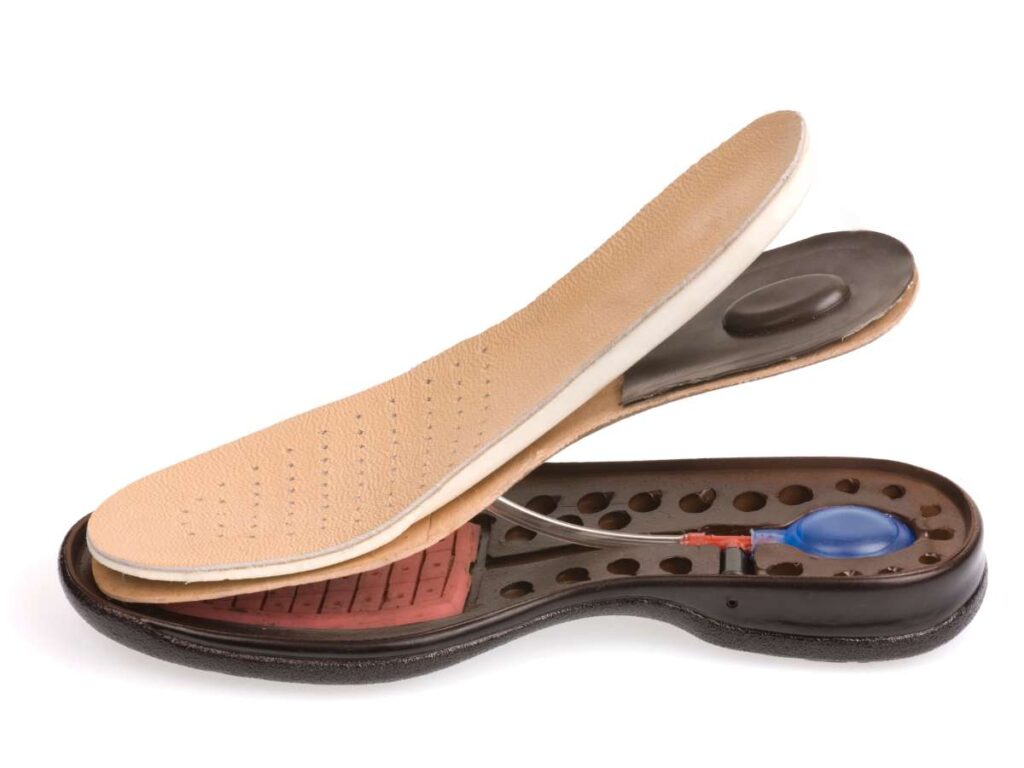
3. Insole (Footbed)
The insole, or footbed, is the layer inside the boot that provides direct support and cushioning for the foot. For instance, it is responsible for much of the boot’s comfort, helping to prevent fatigue and distribute weight evenly during wear. Insoles are designed with various features to suit different needs, from daily casual use to specialized activities like hiking or construction work. Here are the key types of insoles and their advantages:
- Removable insoles allow for customization, enabling users to replace them with orthotic inserts or newer insoles as needed. This feature is particularly valuable for people with unique foot shapes or medical conditions requiring specialized support.
- Memory foam insoles provide personalized comfort by conforming to the shape of the foot over time. At XDS, these insoles are especially beneficial for those who spend long hours on their feet, as they reduce pressure on key points and adapt to foot movements.
- Leather insoles are breathable and durable, making them ideal for high-quality boots. They wick away moisture effectively, making sure the foot stays dry and comfortable throughout the day.
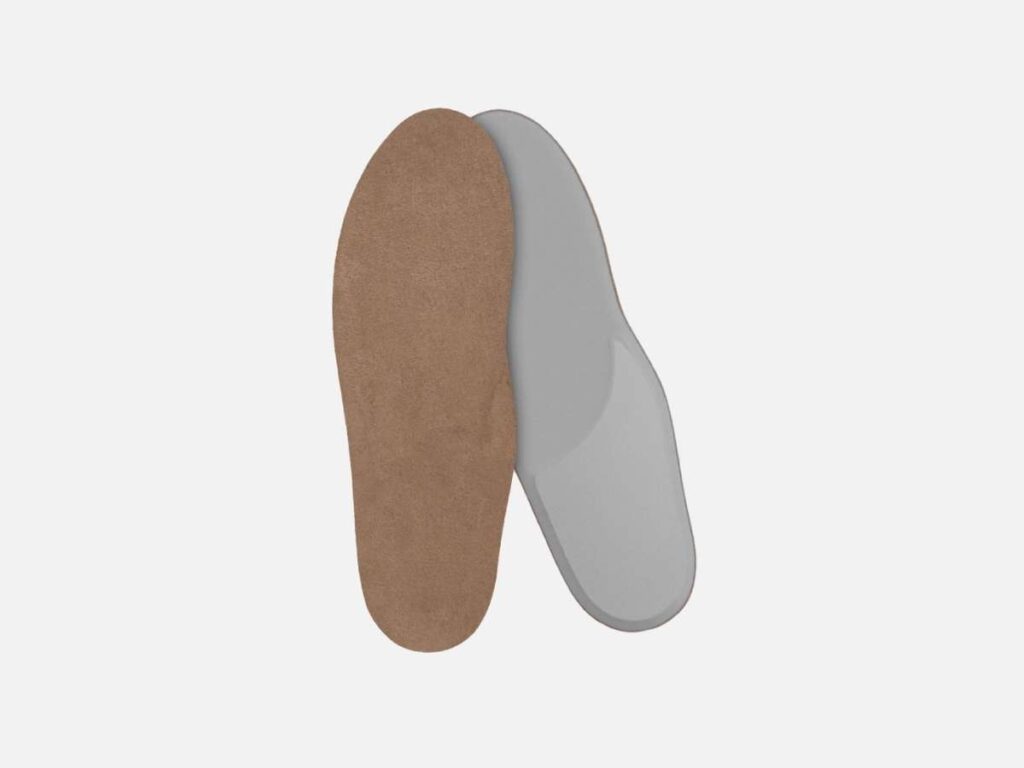
4. Shank
The shank is a supportive component located between the insole and outsole, often made from steel, fiberglass, or composite materials. This small but crucial piece adds stability and helps maintain the structural integrity of the boot, particularly in demanding environments. Here are some common types of shanks and how they enhance performance:
- Steel shanks are strong and durable, offering unmatched support for heavy-duty boots. They excel in providing protection and stability, especially for work boots used in industries like construction or logging.
- Fiberglass shanks are lightweight and flexible, making them a great option for boots requiring a balance between support and comfort. They resist rust and temperature changes, establishing long-lasting performance in various conditions.
- Composite shanks combine materials like nylon and plastic to create a versatile, non-metallic option. These shanks are ideal for environments requiring non-metal footwear, such as airports or electrical workspaces.
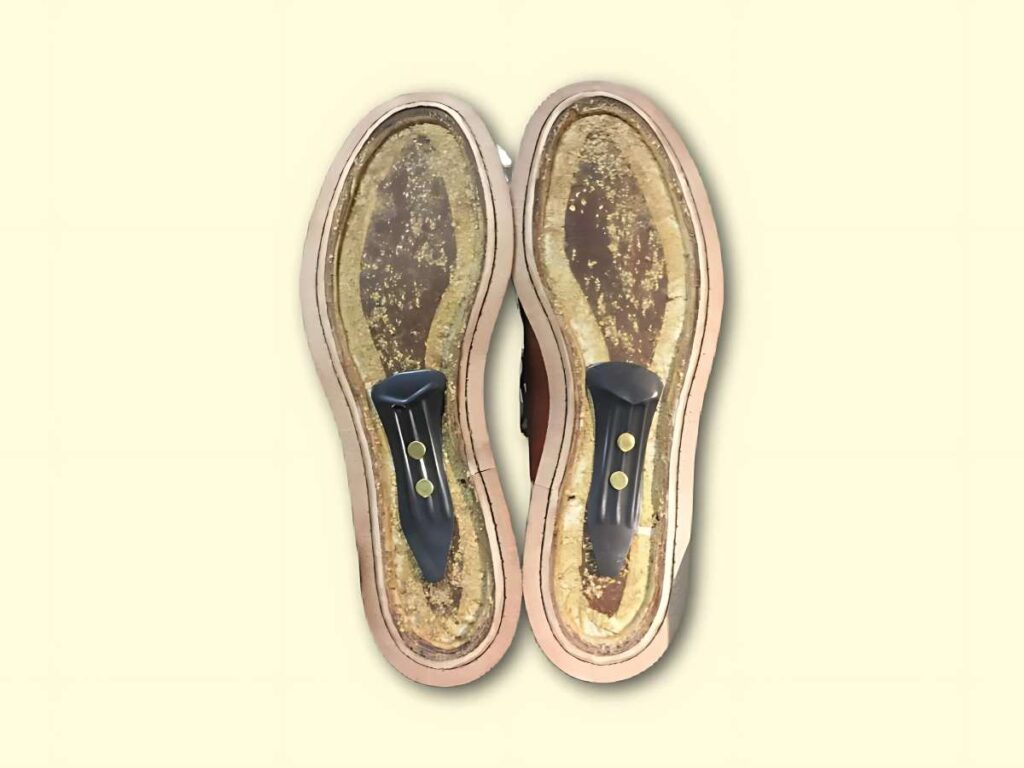
5. Heel
The heel is a critical component of boot design, serving as both a functional and aesthetic feature. It provides stability, balance, and, in some cases, a touch of elegance. Depending on the type and purpose of the boot, the heel can be flat, angled, or elevated, each with unique characteristics and benefits. Below is a comparison chart of the main types of heels and their applications:
| Type of Heel | Description | Common Applications |
| Flat Heels | Designed for stability and comfort, offering a solid foundation that reduces strain on the feet. | Hiking boots, work boots, and casual footwear for prolonged standing or walking on uneven terrain. |
| Stacked Heels | Composed of layered leather or synthetic materials, adding a refined and elegant touch to the boot. | Dress boots, formal boots, and semi-casual styles where both style and moderate elevation are desired. |
| Wedge Heels | Extend from the heel to the midsole, distributing weight evenly to reduce pressure points. | Long-term wear boots, casual boots, and activities requiring enhanced support and comfort. |
| Cuban Heels | Slightly angled and narrower, providing a mix of height and support for a distinctive look. | Cowboy boots, western-style boots, and dress boots where style meets practicality. |
| Block Heels | Wide and stable, offering balance and even weight distribution for added comfort and durability. | Fashion boots, work-friendly styles, and boots for extended wear where height and stability are essential. |
| Kitten Heels | Low and narrow, emphasizing elegance and style while offering slight elevation. | Women’s fashion boots, dressy boots, and styles focused on a polished, sleek appearance. |
Different heel types cater to varying needs, from stability and support to aesthetics and height. Selecting the right heel depends on the intended use of the boot, ensuring comfort and functionality without compromising style.
6. Heel Cap
The heel cap, located at the bottom of the heel, is a protective layer that prevents wear and tear on this high-impact area of the boot. Although small, this component plays a significant role in prolonging the boot’s lifespan and maintaining safety. Here are the key benefits of heel caps:
- Heel caps protect the heel from excessive wear, making sure the boot remains functional and comfortable over time. By absorbing impact, they reduce stress on both the boot and the foot during daily activities.
- Heel caps improve traction on various surfaces, particularly in slippery or uneven environments. The added grip enhances stability, making the boot safer to use in challenging conditions.
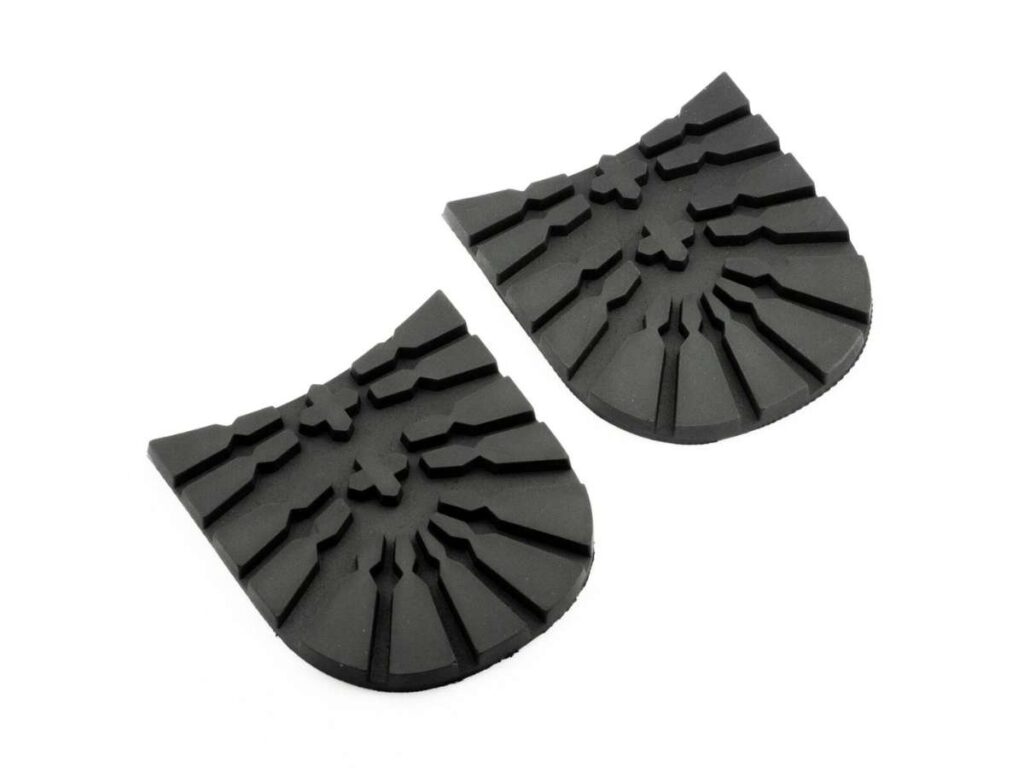
7. Welting
Welting is the process used to attach the sole to the upper part of the boot, determining its durability, flexibility, and reparability. This construction technique is a hallmark of quality footwear and significantly impacts the boot’s performance and longevity. Here are the most common types of welting and their benefits:
- Goodyear welting uses a strip of leather or synthetic material stitched to both the sole and upper. This method is highly durable and allows for easy resoling, making it a popular choice for premium boots.
- Blake stitching connects the sole directly to the upper, offering a sleek profile and flexibility. While less water-resistant than Goodyear welting, it provides a more streamlined appearance.
- Cemented construction bonds the sole to the upper using adhesive, creating lightweight and cost-effective footwear. This method is ideal for casual boots, though it may not be as durable or repairable as stitched options.
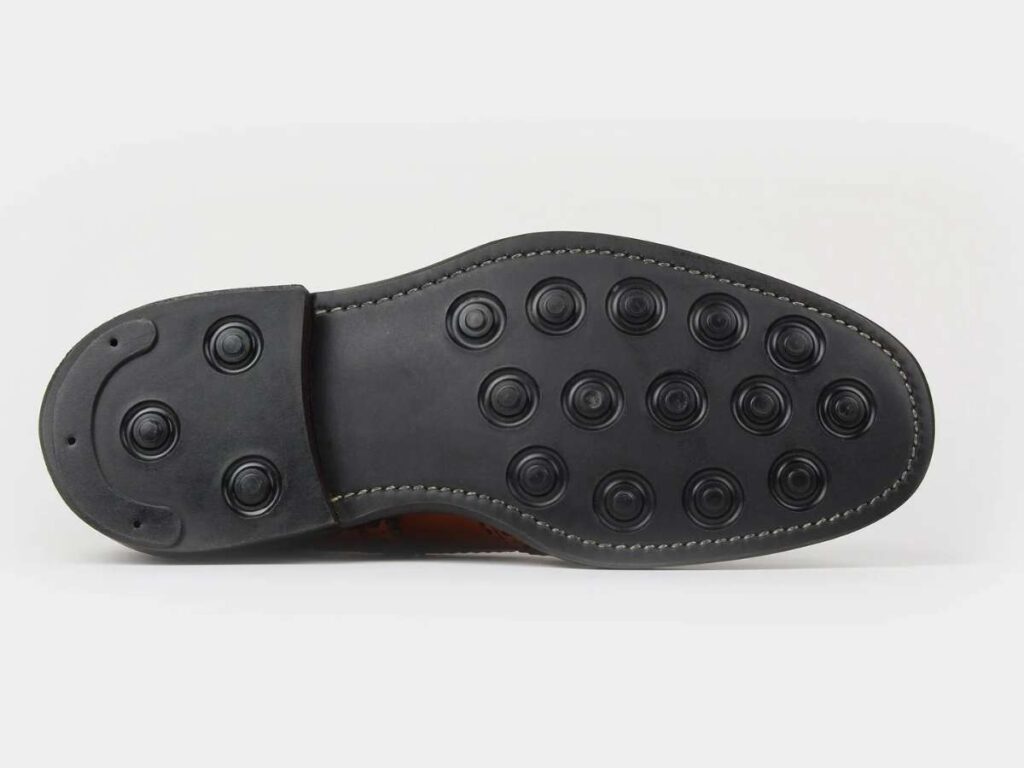
8. Lug Pattern
The lug pattern refers to the design of the tread on the outsole, which is crucial for providing grip and traction. This feature makes sure the boot performs well on various surfaces, from smooth pavements to rugged trails. Here’s how lug patterns enhance functionality:
- Deep lugs are designed for boots used in rugged environments, such as hiking or mountaineering. These patterns offer excellent grip and prevent slippage, even on wet or uneven terrains.
- Shallow lugs are more suited to dress boots, offering a cleaner, polished look while maintaining adequate traction for urban use. The minimalistic design complements formal wear without sacrificing safety.
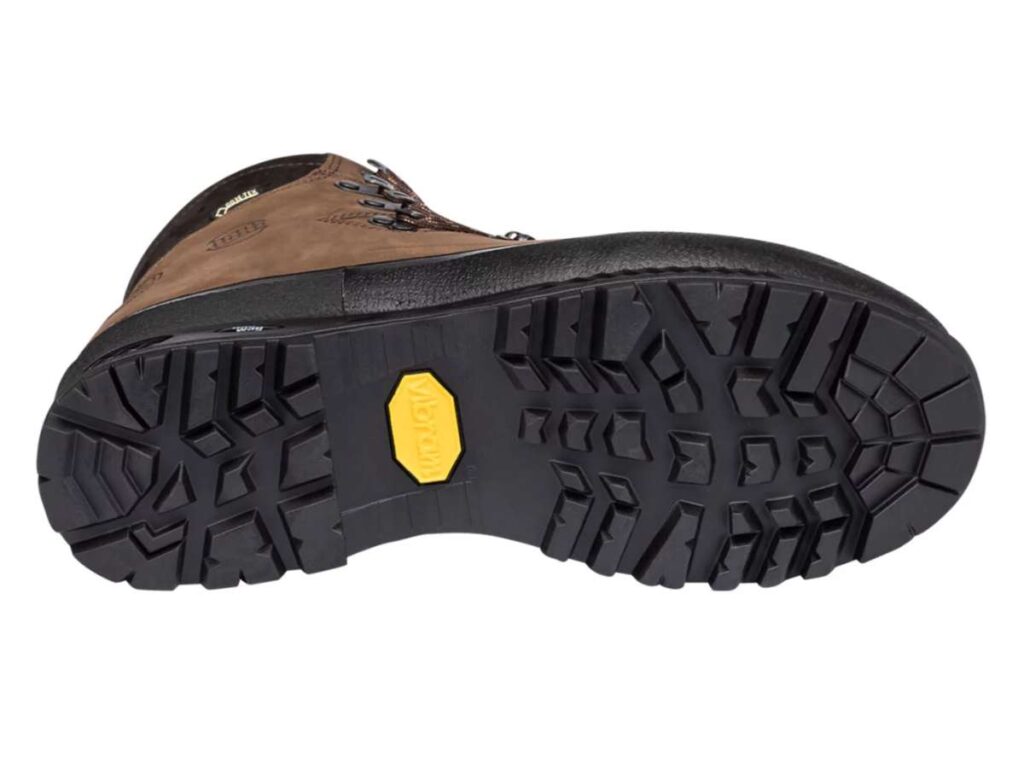
9. Toe Cap
The toe cap is a protective and often reinforced section at the front of a boot, serving both functional and aesthetic purposes. For instance, it shields the toes from impact, helps maintain the boot’s shape, and can enhance the overall durability of the footwear. Here are the most common types of toe caps and their applications:
- Steel toe caps are widely used in safety boots, offering maximum protection against heavy objects or compression. These are essential in industries such as construction and manufacturing, where toe injuries are a significant risk. The added weight is balanced by the unparalleled safety they provide.
- Composite toe caps are lightweight and made from materials like plastic, Kevlar, or carbon fiber. They meet safety standards while offering greater comfort, especially in jobs requiring frequent movement. Their non-metallic nature makes them suitable for environments with metal detectors or electrical hazards.
- Soft toe caps lack reinforcement but provide flexibility and comfort, making them suitable for casual or light-duty boots. These are often used for everyday wear or activities that don’t require heavy-duty protection.
- Aluminum toe caps offer a lightweight alternative to steel while maintaining high safety standards. They are popular in environments that demand a balance between protection and reduced boot weight.
- Decorative toe caps are commonly found in cowboy or dress boots. While they add style and enhance the visual appeal of the footwear, they also provide a layer of durability to the toe area, preventing scuffs and abrasions.
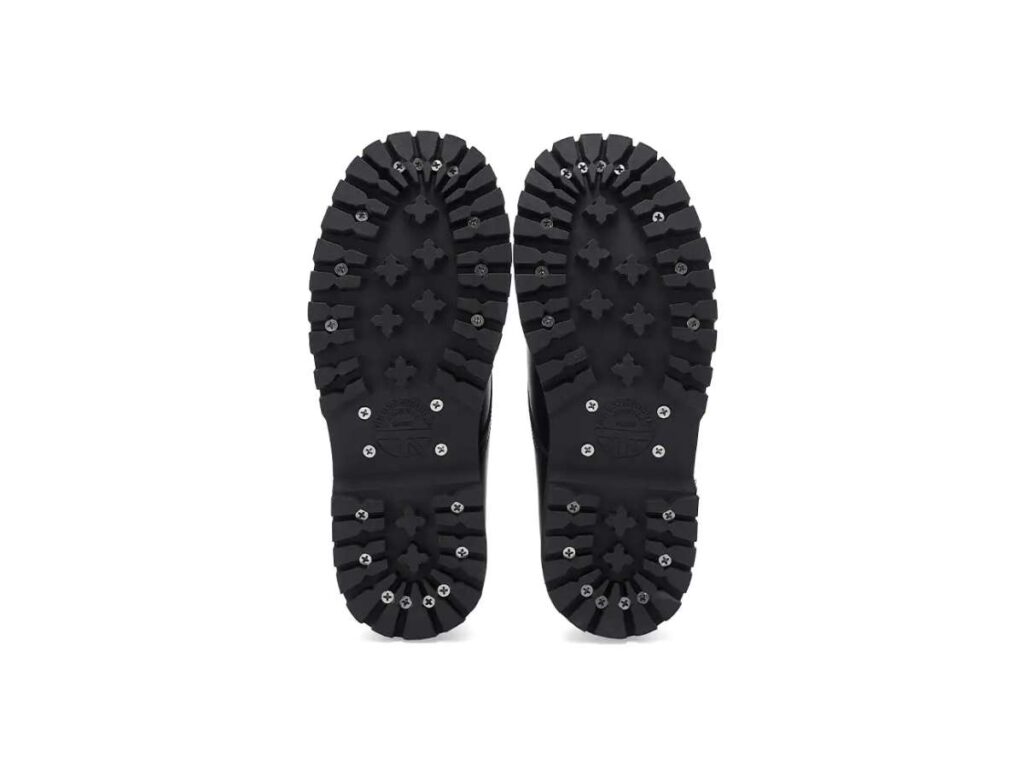
10. Outsole Edging
The outsole edging is the finishing detail around the perimeter of the boot sole, serving as both a functional and decorative element. While it primarily enhances the boot’s appearance, it also adds structural integrity, protecting the sole and ensuring a longer lifespan. Here are some common types of outsole edging and their benefits:
- Smooth edging creates a clean, polished look, often seen in dress boots or formal footwear. It adds sophistication to the boot’s appearance and complements its sleek design. While primarily aesthetic, it can also protect the sole from minor abrasions.
- Textured edging provides additional grip and reinforcement, making it ideal for work or outdoor boots. The added texture helps guard the edges of the sole from damage during rough use, contributing to overall durability.
- Beveled edging features an angled design that offers a stylish finish and prevents the edges from catching on uneven surfaces. This is often used in high-end handcrafted boots for both practical and aesthetic purposes.
- Stitched edging showcases visible stitching along the edge of the sole, adding a rugged and artisanal touch. This design is commonly found in boots with Goodyear welting, reinforcing durability and showcasing craftsmanship.
- Contrast edging uses different colors or materials to highlight the perimeter of the sole, adding a unique flair. This is a popular choice in fashion-forward boots, creating a distinct and eye-catching style.
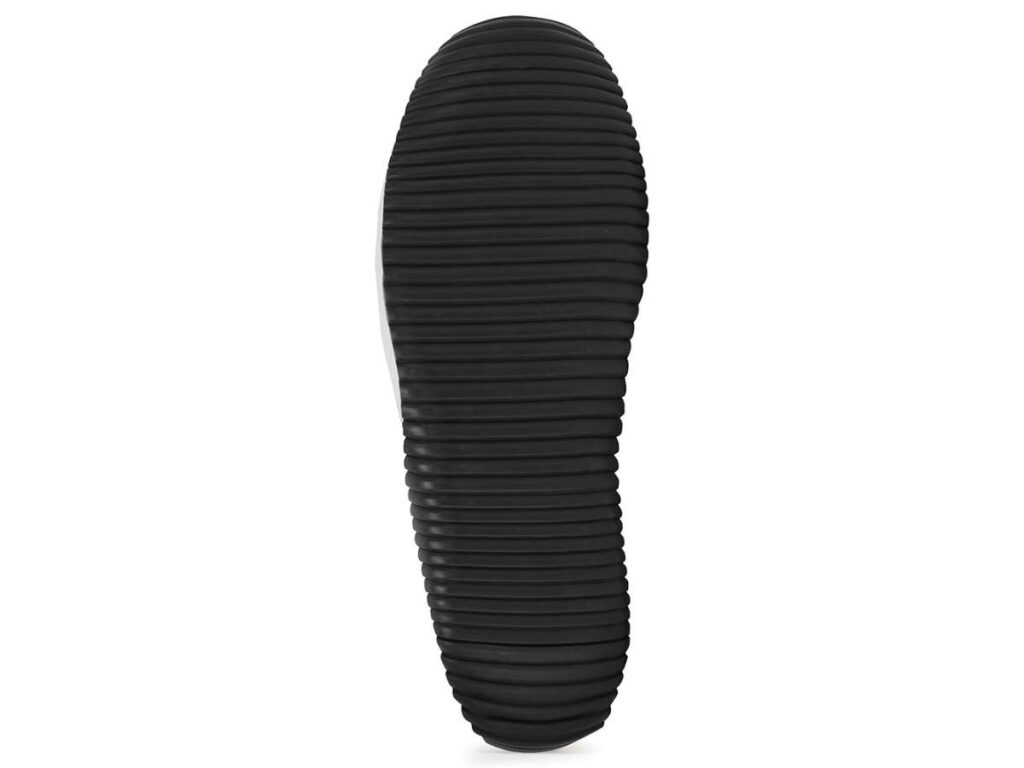
Conclusion
Understanding the parts of a boot sole is critical to establishing optimal performance, durability, and comfort for various applications. Each component, from the outsole to the heel cap, plays a unique role in creating a functional and reliable boot. Whether selecting footwear for demanding environments or everyday use, knowing the anatomy of a boot sole helps in making better-informed decisions.
We hope this guide has provided valuable insights into the essential elements of a boot sole. At XDS, we can replicate and provide the quality, upper fabrics, sole materials, innovation, and diverse categories of top brands. Contact us today to learn how XDS can deliver top-tier products that align with your expectations and goals.
Check Out These Additional Resources
Want to learn more? Here are some articles filled with valuable tips and information to guide you further:
Still haven’t found what you’re looking for? Don’t hesitate to contact us; we’re available around the clock to assist you.
Quick Quote
Fill out the form, get the quote in hours!
